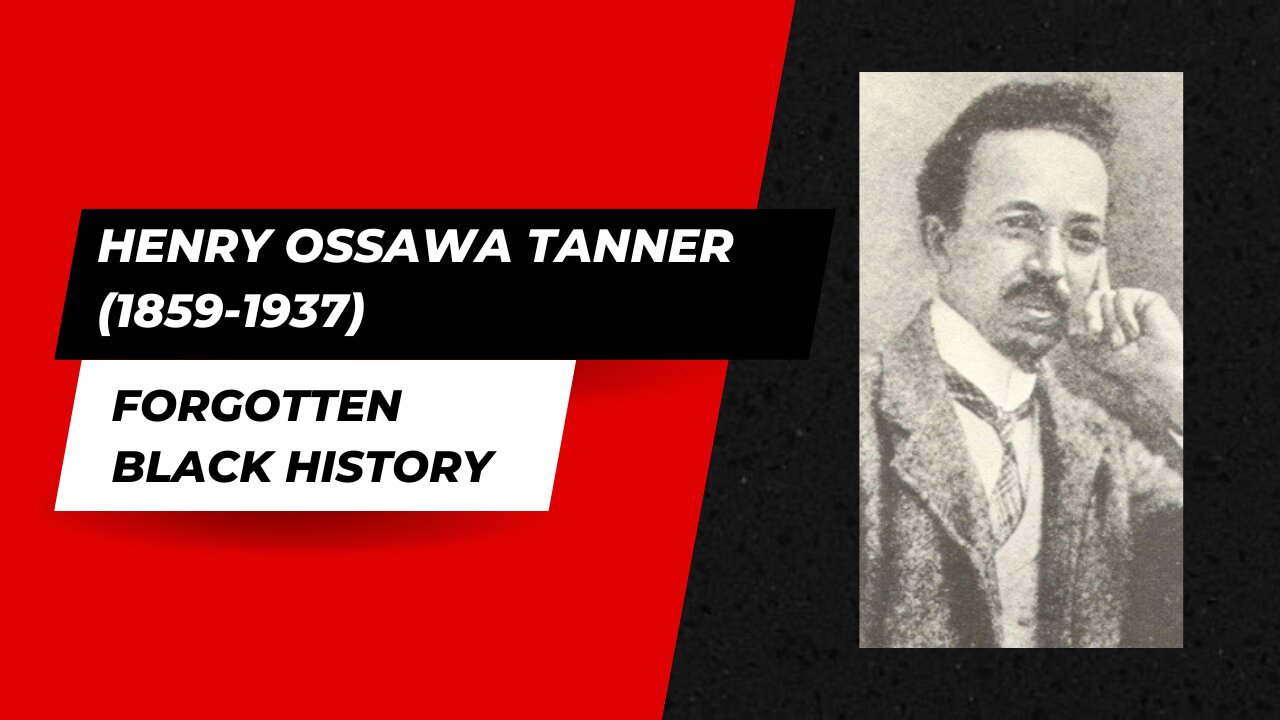Premium Only Content

HENRY OSSAWA TANNER (1859-1937)
The first African American artist to gain international renown, Henry Ossawa Tanner was the son of a prominent cleric born in Pittsburgh, Pennsylvania on June 21, 1859. At age 13, inspired by an artist painting a landscape in a local park, he committed himself to a career in art despite his father’s initial discouragement. Entering the Pennsylvania Academy of Fine Arts in 1879, he was influenced by the revered painter, Thomas Eakins, and developed his own introspective, empathetic realist style. For quite some time, Tanner had wanted to work in Europe where there was greater racial tolerance and where he could expand his artistic horizons, but his modest success as an artist in Philadelphia and as a photographer in Atlanta, Georgia, prevented him from earning enough to cover his transportation costs to cross the Atlantic.
Tanner’s situation changed in 1891 when, with the assistance of two benefactors, he set off for Paris, France and enrolled in the Académie Julian. Illness curtailed his first experience in Europe, and he returned to the United States. In 1893, at the World’s Columbian Exposition in Chicago, Illinois, he exhibited The Banjo Lesson, one of his best known works, which featured an elderly black man instructing a boy to play the banjo. His success in the U.S. using blacks as subjects in his painting allowed him to return to Paris where his painting The Music Lesson qualified him to exhibit in the Parisian Salon. The stunning success of his first major religious work, Daniel in the Lion’s Den (1896), brought more international recognition. For decades this was the only painting by an African American exhibited in the Louvre in Paris. Tanner’s other major paintings included The Resurrection of Lazarus (1896), Nicodemus Visiting Jesus (1899), and Two Disciples at the Tomb (1905), which is now part of the permanent collection of the Art Institute of Chicago. All of these works were celebrated award-winners that firmly established his lasting reputation as a painter of religious themes.
In 1909, Tanner was elected to the National Academy of Design. Later, he worked for the Red Cross during World War I. Henry Ossawa Tanner died in Paris on May 25, 1937. In 1996, President Bill Clinton requested and received Tanner’s Sand Dunes at Sunset, Atlantic City as part of the White House’s permanent painting collection.
-
 18:17
18:17
Forgotten Black History
3 months agoJay-Z in Huge Trouble Alongside Diddy
1581 -
 0:28
0:28
evergreenhillbeagles
2 years agoHenry 5wks
362 -
 0:24
0:24
ConversadeNerd
2 years agoHENRY CAVILL SR. FANTÁSTICO?!
2 -
 1:07:03
1:07:03
Winston Marshall
2 hours agoEXCLUSIVE : Oliver Anthony On Life After ‘Rich Men’, The Christian Counter Culture and The Elites
10.6K5 -
 1:44:47
1:44:47
Russell Brand
4 hours agoDigital Censorship & Political Warfare: X Attacked, Rand Paul Rebels, Free Speech on Trial – SF551
85K18 -
 LIVE
LIVE
tastylive
3 hours agoLIVE Stocks, Options & Futures Trading with the Pros! (Market Open -> Close & More) March 11th, 2025
199 watching -
 1:35:59
1:35:59
Simply Bitcoin
4 hours ago $1.31 earnedTrumps Bitcoin Embrace TERRIFIES The EU | EP 1200
17.6K3 -
 2:00:05
2:00:05
The Charlie Kirk Show
3 hours agoThe Left Regroups + Deporting Hamas Lovers + Love Is Blind? | Rep. Donalds, Dr. Arnn | 3.11.25
78.5K12 -
 30:41
30:41
BonginoReport
22 hours agoTrump Pulls Ultimate Uno Reverse Card On Illegals (Ep.1) - 03/10/2025
120K519 -
 34:53
34:53
Grant Stinchfield
21 hours ago $2.51 earnedDoctored Photos and Phony Stats, How The Media is Weaponizing the Measles... Again!
27.3K5